Buxton 2015
25 July
Ross and I stayed in a self-catering flat in Buxton to give ourselves a chance to see more of the surrounding area while taking in the Festival's main offerings.
 Donizetti's Lucia di Lammermoor remains one of my favourite works and it is such an integrated drama that it can survive many different types of presentation from the pared down circumstances of Clonter Opera to the full scale presentations I've seen given by the Royal Opera and Welsh National Opera.
Donizetti's Lucia di Lammermoor remains one of my favourite works and it is such an integrated drama that it can survive many different types of presentation from the pared down circumstances of Clonter Opera to the full scale presentations I've seen given by the Royal Opera and Welsh National Opera.
With a sturdy professional cast in Elin Pritchard, Adriano Graziani, Stephen Gadd, Bonaventura Bottone and Andrew Greenan conducted by Stephen Barlow, in a production by Stephen Unwin, this was not a night that dreams are made of but, in a small theatre, it exerted its own particular dramatic grip.
We had decided to visit places in the surrounding area and our first was Haddon Hall near Bakewell.
I loved the Medieval frescos in the Chapel.
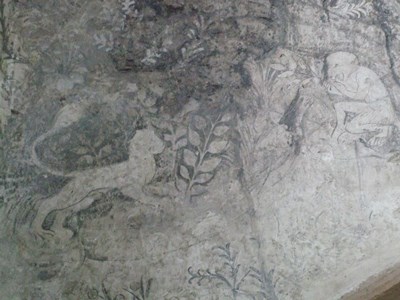
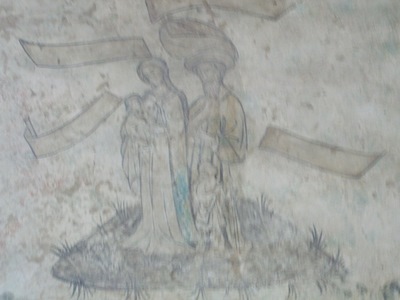
The long gallery was just that and elegant too.
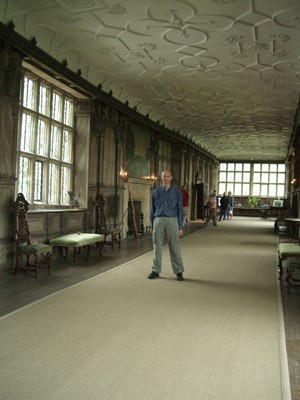

We both enjoyed the gardens.
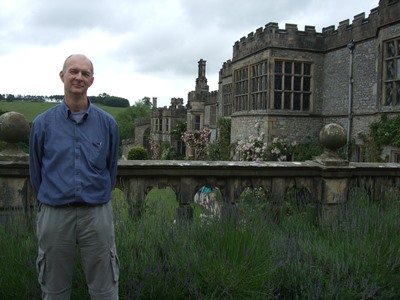
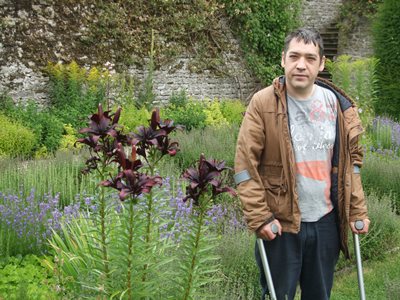
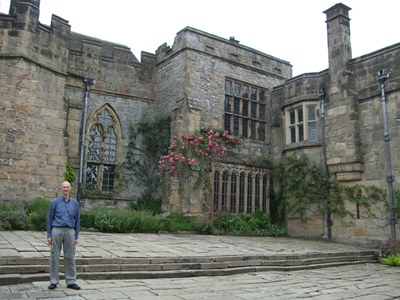
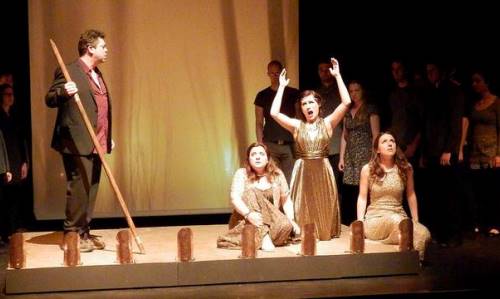 Dido and Aeneas was alright but was maybe a ticket that we hadn't really need to buy.
Dido and Aeneas was alright but was maybe a ticket that we hadn't really need to buy.
 I enjoyed the Elias String Quartet's concert of quartets by Vienna's three unquestioned genii, Haydn, Mozart and Beethoven.
Haydn's String Quartet in C The Bird was as genial and tuneful as you would expect it to be with lots of fin to be had with the chirruping and chirping sounds requested from the players.
I enjoyed the Elias String Quartet's concert of quartets by Vienna's three unquestioned genii, Haydn, Mozart and Beethoven.
Haydn's String Quartet in C The Bird was as genial and tuneful as you would expect it to be with lots of fin to be had with the chirruping and chirping sounds requested from the players.
Mozart's String Quartet in C Dissonance was in certain respects the most radical of the three works. Although it holds fast to conventions of form and tonality, it doesn't sound as though it does and the second movement andante cantabile came as if from another world.
Beethoven's second Rassumovsky String Quartet in E minor clearly builds on all of the insights into the possibilities of music for string quartet which his two eminent predecessors had brought before the public. Fun, graceful, serious, thoughtful by turns, it shows its hard won craft by sounding as though it flowed off the pen and was always meant to be.
Hardwick Hall was a definite highlight of the holiday.
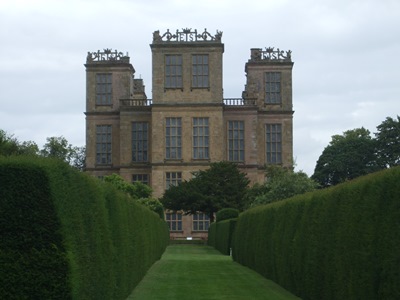
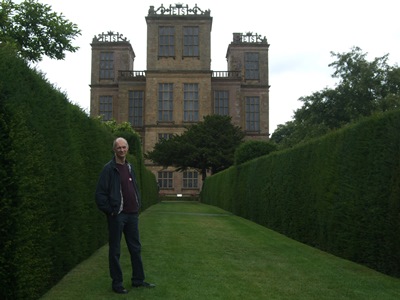
Built for Bess by Robert Smythson (who as designer/architect was something of an innovation in himself), it was something of a wonder in its day with the south facing frontage "more glass than wall" - glass being a very new thing and incredibly expensive. The ground floor windows are two lights tall, the family rooms on the first floor have windows of three lights tall and the second floor, where the show rooms were have windows of four lights. It must have felt and though the room were flying over the countryside. Even today the light in the rooms is astonishing.

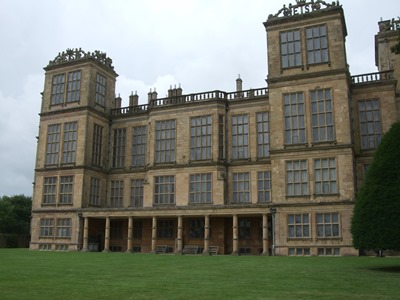
The gardens were fit for the Countess of Shrewsbury, as Bess had become. She was also one of the wealthiest women in the land as you can tell from the quality of the fitted tapestries cladding the walls up the Great Staircase.
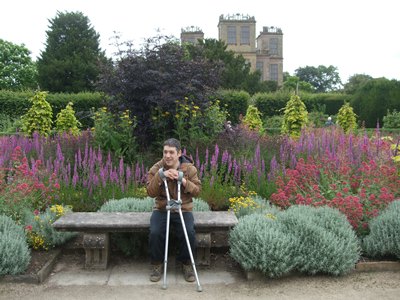
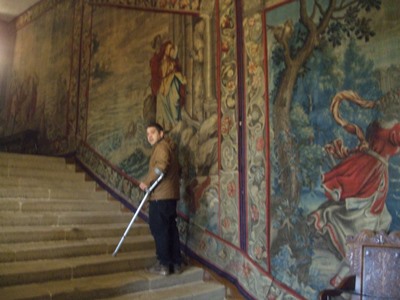
The Long Gallery was another statement of wealth and luxury whilst the Great Chamber was imposing enough for a queen.


She really must have been some woman.
Our next trip out was to Eyam - often known as the "plague village".
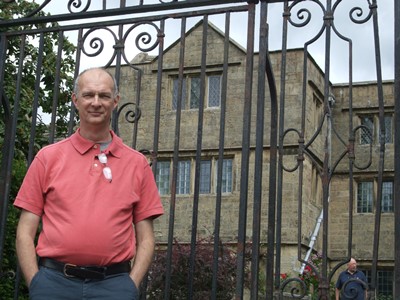

The story here is that, in 1665, at the height of the Great Plague, Alexander Hadfield, the local tailor, took delivery of a flea-infested (unbeknownst to him) bale of cloth from London. Within weeks, members of the household were dying.
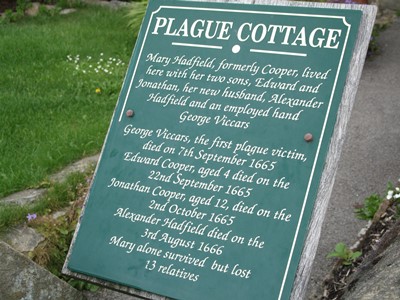
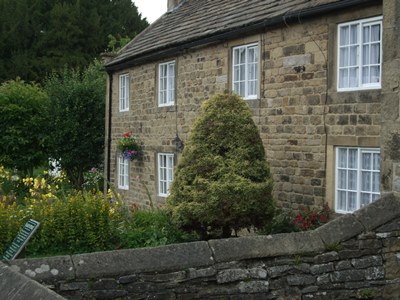
The religious leaders put into place some protections for the inhabitants to help protect the spread of the disease - the most famous of these was the decision to put the whole village into quarantine so as to contain the outbreak and prevent further spread within the High Pennine communities.
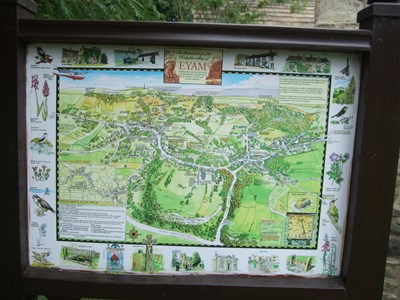

Over the next fourteen months, the Plague killed more that half of the village's inhabitants but the quarantine held and prevented many more deaths in the surrounding areas.
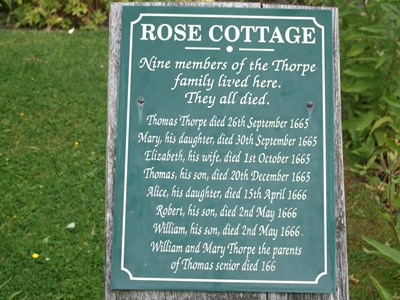
Many tear-jerking stories abound - such as the two lovers, separated by belonging to different village communities, who would stand at a distance from each other and wave before disease took the Eyam resident. It's a place where social history is palpable though I have to say that I should hate to live in a tourist museum.
 The Frith Piano Quartet gave a programme embracing the second half of the nineteenth century with Schumann's Piano Quartet in E flat and Dvořák's Piano Quartet No 2 in E flat.
The Frith Piano Quartet gave a programme embracing the second half of the nineteenth century with Schumann's Piano Quartet in E flat and Dvořák's Piano Quartet No 2 in E flat.
As was to be expected, the Schumann was the more nervy and intense of the two with lots of obsessive repetitions, hurried rather than swift with a slow movement of melancholy heartache.
The Dvořák was more relaxed and lyrical, though not without its own heartache, and was shot through with the rhythms of the dance.
It was the sort of lunchtime concert which brings a balm to the soul.
 I'd never before attended a performance of Gustave Charpentier's Louise and, of the music, really only knew the aria Depuis le jour from the first act. It was a pity, therefore, that the work was not given a full production but the Festival did step up one from the announced concert performance and ensured that the performers donned costumes and moved about the stage with some spare and modest props.
I'd never before attended a performance of Gustave Charpentier's Louise and, of the music, really only knew the aria Depuis le jour from the first act. It was a pity, therefore, that the work was not given a full production but the Festival did step up one from the announced concert performance and ensured that the performers donned costumes and moved about the stage with some spare and modest props.
Stephen Barlow showcased the score to advantage and Madeleine Pierard was a radiant Louise. Susan Bickley and Michael Druiett as Mère and Père were solid casting and, while Adrian Dwyer may not have had the correct French sound in his voice, he did make an ardent lover out of the character Julien.
It's a long score (close on three hours' worth of music) but, for me, the time flashed past.
 Stephen Hough always puts on a good show, thoughtful, intelligent and a great lyricist.
Stephen Hough always puts on a good show, thoughtful, intelligent and a great lyricist.
His best work in this recital came through the French composers - Franck's Prelude, Chorale and Fugue and Debussy's Three Estampes. He has both the technique and the sense of Gallic grace and elegance for this repertoire.
Schubert's Piano Sonata No14 in A minor fared less well although I think that this was as much to do with the work as anything else. It's quite an early work in that he was in his mid-twenties when he wrote it and only beginning to find his full voice as a composer. However, he was dead by 31 and so, by that standard, it is almost a late work within his total output.
Given how far his musical genius progressed between this work and the last three piano sonatas, composed in the September of his final year, you can't help but wonder what might have been.
I'm not a great fan of Liszt's music. There's just to much bombastic showing off for my taste and so it was with the tenth and eleventh of his Études d'exécution transcendante no matter how well they were executed.
 Our final show was Verdi's Giovanna d'Arco. It was a good choice for Buxton. Early Verdi. Little known or heard. Enough good music to make it worth while. A happy fit for a house the size of Buxton. Younger, smaller voices can sing out to make themselves heard without forcing.
Our final show was Verdi's Giovanna d'Arco. It was a good choice for Buxton. Early Verdi. Little known or heard. Enough good music to make it worth while. A happy fit for a house the size of Buxton. Younger, smaller voices can sing out to make themselves heard without forcing.
Ben Johnson was particularly good as Carlo as was Kate Ladner as his Giovanna. Stuart Stratford conducted with a good sense of style and the whole was directed by Elijah Moshinsky who must by now have worked on pretty much all of Verdi's works.
And then we were done.
 Donizetti's Lucia di Lammermoor remains one of my favourite works and it is such an integrated drama that it can survive many different types of presentation from the pared down circumstances of Clonter Opera to the full scale presentations I've seen given by the Royal Opera and Welsh National Opera.
Donizetti's Lucia di Lammermoor remains one of my favourite works and it is such an integrated drama that it can survive many different types of presentation from the pared down circumstances of Clonter Opera to the full scale presentations I've seen given by the Royal Opera and Welsh National Opera.







 Dido and Aeneas was alright but was maybe a ticket that we hadn't really need to buy.
Dido and Aeneas was alright but was maybe a ticket that we hadn't really need to buy.
 I enjoyed the Elias String Quartet's concert of quartets by Vienna's three unquestioned genii, Haydn, Mozart and Beethoven.
Haydn's String Quartet in C The Bird was as genial and tuneful as you would expect it to be with lots of fin to be had with the chirruping and chirping sounds requested from the players.
I enjoyed the Elias String Quartet's concert of quartets by Vienna's three unquestioned genii, Haydn, Mozart and Beethoven.
Haydn's String Quartet in C The Bird was as genial and tuneful as you would expect it to be with lots of fin to be had with the chirruping and chirping sounds requested from the players.















 The Frith Piano Quartet gave a programme embracing the second half of the nineteenth century with Schumann's Piano Quartet in E flat and Dvořák's Piano Quartet No 2 in E flat.
The Frith Piano Quartet gave a programme embracing the second half of the nineteenth century with Schumann's Piano Quartet in E flat and Dvořák's Piano Quartet No 2 in E flat.
 I'd never before attended a performance of Gustave Charpentier's Louise and, of the music, really only knew the aria Depuis le jour from the first act. It was a pity, therefore, that the work was not given a full production but the Festival did step up one from the announced concert performance and ensured that the performers donned costumes and moved about the stage with some spare and modest props.
I'd never before attended a performance of Gustave Charpentier's Louise and, of the music, really only knew the aria Depuis le jour from the first act. It was a pity, therefore, that the work was not given a full production but the Festival did step up one from the announced concert performance and ensured that the performers donned costumes and moved about the stage with some spare and modest props.
 Stephen Hough always puts on a good show, thoughtful, intelligent and a great lyricist.
Stephen Hough always puts on a good show, thoughtful, intelligent and a great lyricist.
 Our final show was Verdi's Giovanna d'Arco. It was a good choice for Buxton. Early Verdi. Little known or heard. Enough good music to make it worth while. A happy fit for a house the size of Buxton. Younger, smaller voices can sing out to make themselves heard without forcing.
Our final show was Verdi's Giovanna d'Arco. It was a good choice for Buxton. Early Verdi. Little known or heard. Enough good music to make it worth while. A happy fit for a house the size of Buxton. Younger, smaller voices can sing out to make themselves heard without forcing.